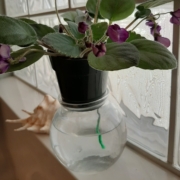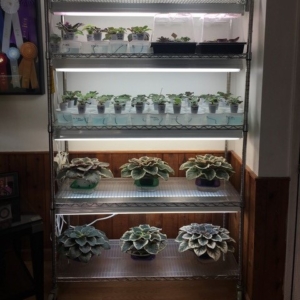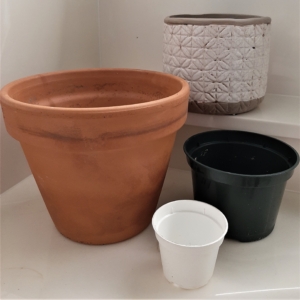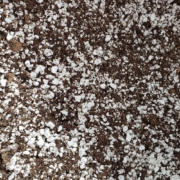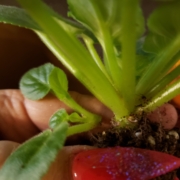BASICS FOR BEGINNERS
PROPER WATERING
Three methods to water violets:
- Top water by pouring room temperature water into the top of the pot (under the leaves) and turning the pot as you pour. Pour enough water that it runs through and drains out the bottom of the pot into a saucer. Wait 10-30 minutes and empty the saucer.
- Bottom water by filling a saucer with room temperature water and allow the violet to stand in the water for up to 30 minutes while the water is absorbed. Drain off the excess water.
- Constant watering methods like wick-watering, capillary mat watering, or specialized pots which self water are also effective. These require specialized potting mix and procedures to make the process work correctly.
If humidity is moderate (20-50%,) expect to water once a week, or when the pot feels very light when lifting it. Growers in more humid climates may need to water less often. Those who live in dry arid climates may need to water more often.
The easiest way to kill your violet is to overwater it.
PROPER LIGHT
Getting the proper light will result in more flowers
In nature, the wild African violet species grow under a deep forest canopy near the equator. It is much like light coming in through windows draped with sheer curtains.
When choosing a good window for your violets, consider these questions:
- How warm does the space get during the hottest or coldest part of a day? Violets prefer a temperature range of 65 to 80° F (18 to 27° C.)
- Does the sun shine directly into the window? The intensity of the full sun is often too strong for African violets, and too hot as well.
- How close will the violets be to the windows? The most successful window growers position their violets within 24 inches (60 cm) of the window.
Watch your violet to see how it reacts to the light. If the leaves develop long stems and reach up, it wants brighter light. If the leaves lose color (bleach) the light is probably too intense.
Those who lack adequate window space often choose artificial light such as LED or fluorescent.
THREE MORE TIPS
TIP #1 POTS
Grow your violet in a pot that is smaller than the spread of the leaves. Many growers find that violets bloom best when the diameter of the plant is three times wider than the pot.
TIP #2 FERTILIZER
Fertilize your violet with every watering if you want it to thrive and to bloom well. A balanced fertilizer for houseplants works well for many growers. If the package gives directions for monthly use, cut the fertilizer to one-fourth strength for weekly use. Weekly – weakly produces good results. Avoid over-fertilizing.
TIP #3 POTTING MIX
Violets have very fine roots and are very sensitive to root rot if they do not have air pockets in the potting mix. For this reason, many growers choose a peat-based potting mix that is 50% coarse perlite. It is rare to be able to buy such a porous mix in a store. To make your own, mix one-part potting mix with one-part coarse perlite. When potting plants, be careful to pile the mix loosely into the pot and do not pack the soil down around the roots.
Read More About Pots ~ Fertilizer ~ Potting Mix


